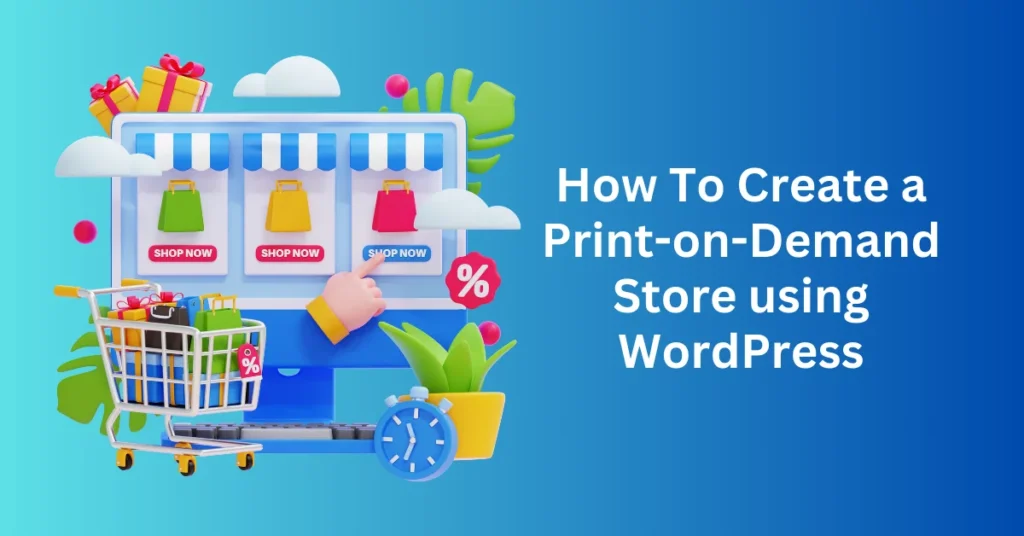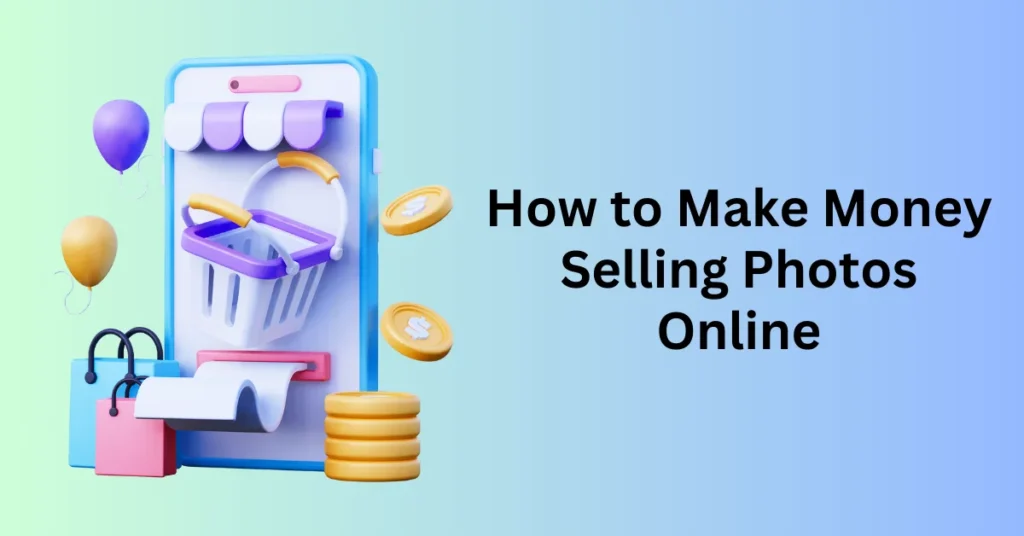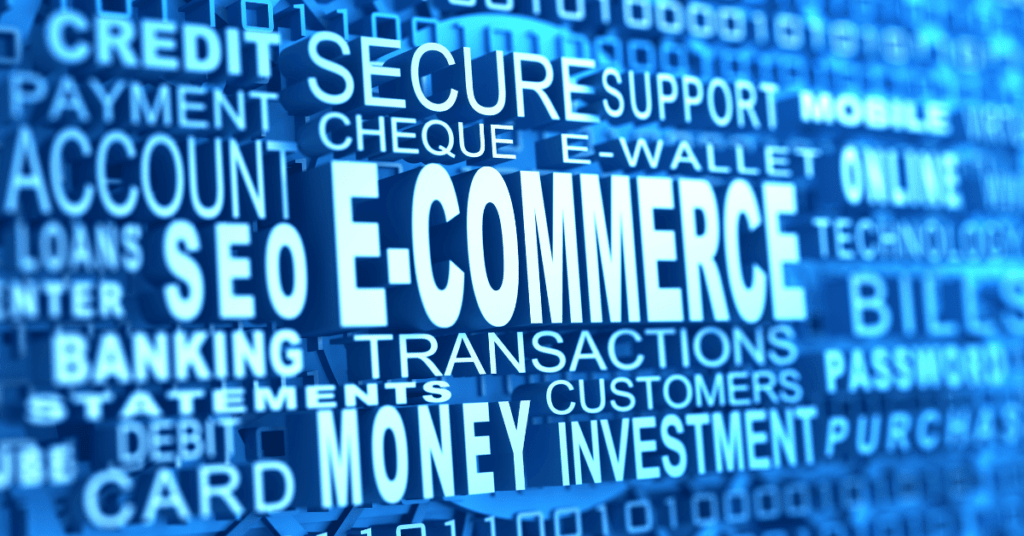Online businesses come in many forms, ranging from subscription boxes to dropshipping, and everything in between. However, among these various models, print-on-demand (POD) stands out as one of the best options for entrepreneurs who want to avoid the complexities and risks associated with inventory management.
This simplicity and flexibility are key reasons why the POD market is projected to surpass $43 billion by 2032. Moreover, the model offers a highly profitable and scalable opportunity that does not require any upfront investment in products, making it an appealing choice for aspiring business owners.
But what exactly is a print-on-demand business, and how do you get started? Furthermore, if you’re considering WordPress for your store, how should you go about setting up a POD store on this platform? These are all important questions — and in this guide, we’ll address each one step by step.
By the end of this guide, you’ll have a clear understanding of how the POD business works, how to successfully launch your own store, and how to leverage WordPress to create a professional and profitable online business.
What is Print-on-Demand?

Print on Demand (POD) is an innovative eCommerce business model where custom-designed products are created and sold on a per-order basis. Instead of holding physical inventory, you collaborate with a POD company to produce items such as t-shirts, books, mugs, and more only when a customer places an order. This eliminates the need for upfront investment in stock and minimizes the risks associated with unsold inventory.
POD companies handle not only the production but also critical post-sale tasks, including packaging and shipping. This allows you to focus entirely on creating unique and appealing designs, marketing your store, and engaging with your audience.
The POD model is particularly attractive for entrepreneurs, creatives, and businesses looking to launch or expand their product offerings without significant financial or logistical challenges.
How Does Print-on-Demand Work?
Print-on-demand (POD) operates as a straightforward process that begins with your creative input. First, you craft a unique design tailored to your niche or audience. This could range from artistic illustrations to catchy phrases that resonate with your target market. Once you have your design ready, the next step is to choose a POD service provider, such as Printify, Printful, or Teespring, that offers the products and features you need. These providers typically offer tools to help you visualize your designs on various items, ensuring they meet your expectations.
After selecting your provider, you can upload your design to their platform and customize how it will appear on your chosen products. This process includes adjusting placement, selecting colours, and choosing product types. Once you’re satisfied with the design, the next step is to sync the provider’s platform with your eCommerce store—whether it’s Shopify, WooCommerce, Etsy, or another platform—and create compelling product listings. To attract customers, these listings should include high-quality mockups, engaging product descriptions, and competitive pricing.
When a customer places an order on your store, the details are automatically forwarded to the POD company. From there, the provider takes over the fulfillment process. They print your design on the product, perform quality control, package it, and ship it directly to the customer. This hands-off approach not only streamlines operations but also allows you to focus on growing your business and refining your offerings, while the POD company handles the production and logistics.
Why Choose Print-on-Demand Business Model
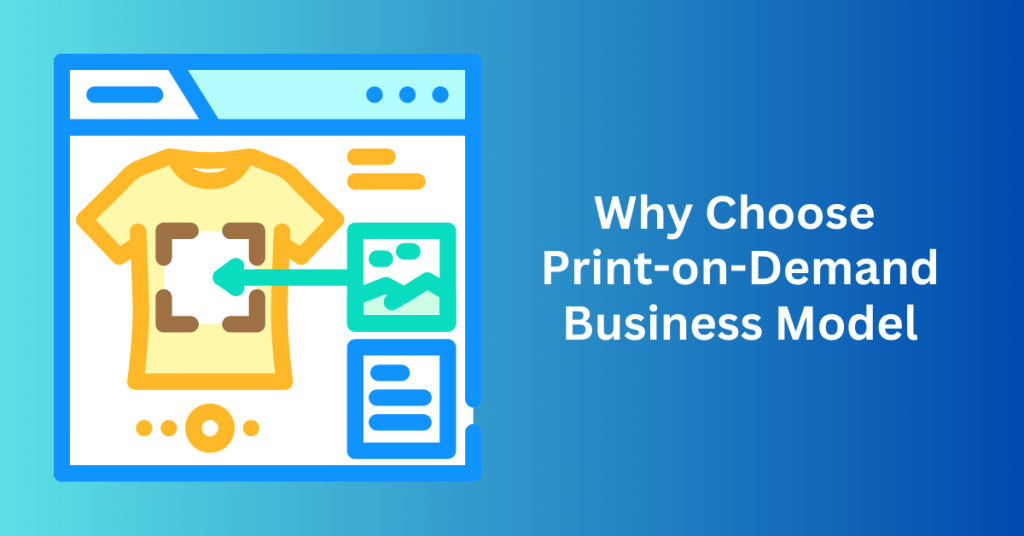
The print-on-demand (POD) business model provides a range of advantages that make it particularly appealing to entrepreneurs, creatives, and small business owners. One key benefit is that POD services allow you to use a white-label approach. This means your branding is at the forefront, with the print provider’s name excluded from the items and packaging. As a result, your customers associate the products entirely with your brand, enhancing your professional image and credibility.
Beyond the branding benefits, here are more compelling reasons to consider starting a print-on-demand business:
1. Low Startup Costs
One of the most attractive features of POD is the minimal upfront investment required. There’s no need to purchase inventory or invest in expensive manufacturing equipment since the print provider handles production. This low-cost entry point makes it easier for entrepreneurs to launch their eCommerce stores and test ideas without significant financial barriers.
2. Reduced Financial Risk
Traditional retail often involves purchasing bulk inventory upfront, which carries the risk of unsold stock. In contrast, with POD, you only produce items after a customer places an order. This eliminates the need for pre-purchasing inventory, allowing you to experiment with different designs and products. By testing what resonates with your audience, you can refine your offerings without wasting resources. As a result, POD offers a more flexible and risk-free approach to managing inventory.
3. Automation
The POD model automates much of the fulfillment process. Once a customer places an order, the print provider handles the printing, packaging, and shipping. This hands-off approach frees up your time to focus on more strategic aspects of your business, such as creating unique designs, marketing your products, and providing excellent customer service.
4. Global Reach
Many POD companies have printing facilities located in various regions around the world. As a result, this global network enables you to sell and ship products to international customers efficiently. Furthermore, with the ability to cater to a global audience, you can expand your business beyond local markets and tap into worldwide demand. This opens up new opportunities for growth and profitability on a larger scale.
5. Sustainability
On-demand printing is inherently more sustainable than traditional manufacturing methods. By producing items only when they are ordered, the POD model minimizes waste and avoids overproduction. This eco-friendly approach aligns with the growing consumer preference for sustainable practices, giving your brand an additional edge in the marketplace.
6. Scalability
Scaling a traditional business often requires significant investments in inventory, storage, and logistics. In contrast, POD businesses can scale effortlessly as demand grows. Since production is handled by the print provider, you can add new designs or expand your product range without worrying about the operational challenges of managing increased sales.
With its low-risk, low-cost structure and flexibility, the print-on-demand business model is ideal for individuals looking to start or grow an eCommerce business. Whether you’re a designer aiming to monetize your creativity or an entrepreneur exploring new revenue streams, POD provides a scalable and sustainable way to build a brand and reach a global audience.
What Print-on-Demand Products to Sell?
The print-on-demand (POD) business model offers an extensive range of products to customize and sell, catering to various niches and interests. If you’re looking to focus on high-demand, profitable products, here are some excellent options to consider:
1. Apparel
The global apparel market was valued at $564.2 billion in 2023, making it one of the largest and most lucrative industries for POD entrepreneurs. Clothing items like t-shirts, hoodies, socks, and hats are perennial favorites due to their universal appeal and versatility. Custom designs, slogans, or niche-focused themes can help you carve out a profitable space in this competitive market.
2. Accessories
Accessories are small, practical items that often attract impulse buyers. Popular options include custom phone cases, tote bags, jewelry, and even backpacks. These products provide ample room for creativity and personalization, allowing you to target specific audiences or trends effectively.
3. Home Decor
With the rise of personalization in interior design, home decor items have become a booming category in POD. Products such as custom-printed pillows, blankets, wall art, and mugs cater to homeowners and decorators seeking unique pieces. Whether your designs are artistic, inspirational, or seasonal, this category offers substantial potential for profit.
4. Books
If you’re an author, POD allows you to self-publish and sell your books without relying on traditional publishers. This is an excellent option for writers, illustrators, or educators looking to distribute novels, journals, coloring books, or educational materials to a global audience.
5. Art Prints and Posters
Artists and graphic designers can turn their creations into a range of products, from posters to wall canvases and even apparel. Offering high-quality reproductions of your work helps you reach a wider audience while maintaining the integrity of your original designs.
6. Gaming Merchandise
Gaming is a rapidly growing niche with a passionate fan base. Custom gaming merchandise such as mousepads, chair covers, and collectibles appeals to this audience. By tapping into gaming culture or creating designs based on popular themes, you can establish a profitable foothold in this dynamic market.
7. Pet Products
Pet owners love personalized items for their furry friends, making this an excellent POD category. You can sell products like pet tags, bowls, clothing, and even custom-printed pet beds. Adding a personal touch, such as pet names or breed-specific designs, makes these items irresistible to animal lovers.
How to Start a Print-on-Demand Store
Building a print-on-demand (POD) store can be an exciting venture, especially if you’re ready to monetize your creativity. Here’s a step-by-step guide to help you launch your POD store using WordPress.
Step 1: Create an Account on a Print-on-Demand Platform
The first step in starting your POD business is to choose a POD platform that aligns with your goals. For example, popular platforms like Printful, Printify, and Gelato each offer a variety of products, features, and pricing options, so it’s essential to choose one that best suits your business needs.
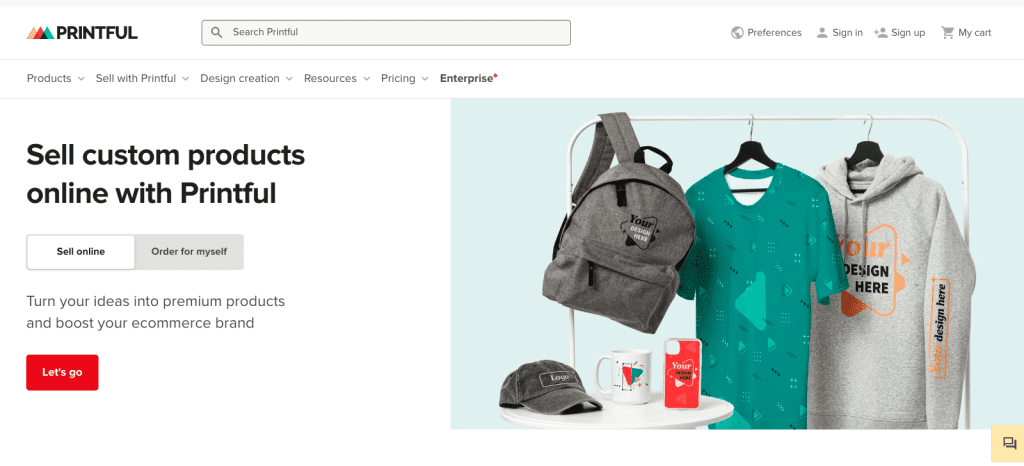
Once you’ve identified the ideal platform, visit its website and look for the “Sign Up” or “Create Account” button, which is typically located at the top right corner of the homepage. Next, carefully review the platform’s terms and conditions to ensure you fully understand the policies and fees. If you agree with the terms, proceed to create your account by filling in the required fields. In most cases, the platform will send a verification email—be sure to follow the instructions to activate your account and complete the registration process.
Step 2: Choose a Store and Domain Name
Your store’s name is a crucial part of your branding and identity. Choose a name that resonates with your target audience, reflects your brand’s personality, and is free of trademark conflicts. Once you’ve settled on a name, it’s time to establish your online presence.
Start by registering a domain name and selecting a web hosting plan. A reliable hosting provider, such as Bluehost, offers excellent uptime, security, and scalability, ensuring your website remains accessible and secure. Many hosting providers also include a free domain for the first year, which can help reduce startup costs.
Step 3: Design Your Store
Designing your online store is easier than ever, thanks to WordPress themes, templates, and plugins. You can create a professional-looking eCommerce site without needing any coding skills.
Here’s a quick overview of the design process:
- Choose a Theme: Select a WordPress theme that aligns with your brand’s style and personality.
- Install Plugins: Enhance functionality with plugins like WooCommerce for eCommerce features and Elementor for design customization.
- Customize the Design: Adjust fonts, layouts, colors, and imagery to build a cohesive and recognizable brand identity.
- Create Essential Pages: Include key pages such as a homepage, about page, contact page, and terms of service.
- Optimize for Mobile: Ensure your store uses a responsive design that adapts seamlessly to various screen sizes for a better user experience.
If you’re new to web design, tutorials or professional web designers can help you build an attractive and functional site.
Step 4: Add Products to Your Store
With your store’s design in place, the next step is to upload your products. To begin, start by creating designs that resonate with your target audience. In order to do this effectively, research their preferences, needs, and pain points to ensure that your offerings align with their interests and desires.
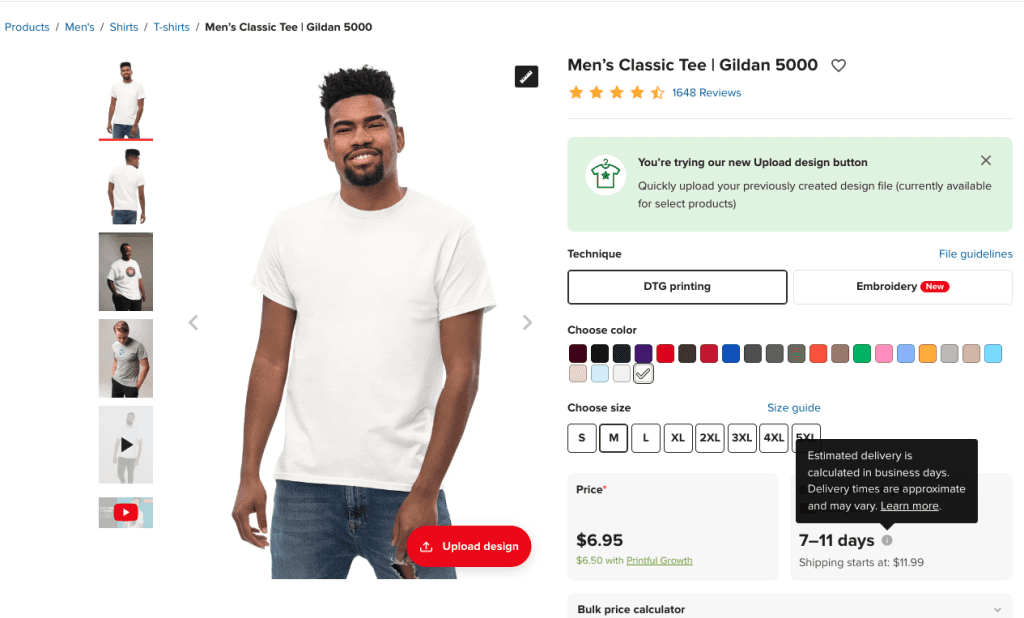
Once your designs are ready, proceed to upload them to your chosen POD platform and make use of its tools to generate mockup images. These visuals will help you showcase your products in a way that appeals to potential customers. Afterward, the next step is to add your products to your eCommerce store, making sure to provide detailed product descriptions, use high-quality images, and set competitive prices. Moreover, be sure to highlight the unique features and benefits of each item to differentiate them from competitors, which will increase your chances of converting visitors into loyal buyers.
Step 5: Set Up Payment Options
Since most POD platforms handle shipping, your primary responsibility is setting up secure payment gateways on your store. Popular options include PayPal, Stripe, and credit card processors, all of which support multiple currencies.
Integrate your chosen payment methods with your eCommerce platform to ensure customers can pay easily and securely. According to a 2023 report by Baymard Institute, 70.19% of shoppers abandon their carts due to a lack of preferred payment options. Offering multiple methods can significantly reduce cart abandonment and improve conversion rates.
Step 6: Promote Your Print-on-Demand Store
Once your store is live, focus on marketing to attract customers. Here are some effective strategies:
- Free Marketing: Use email marketing, social media posts, and search engine optimization (SEO) to drive organic traffic.
- Paid Advertising: Invest in pay-per-click (PPC) campaigns on platforms like Google Ads, Facebook, and Instagram. You can also collaborate with influencers to reach a broader audience.
- Content Marketing: Share valuable content, such as how-to guides, style tips, and trend insights, to engage your target audience. Post this content on your blog, social media, and email newsletters to build authority and trust in your niche.
By combining organic and paid strategies, you can grow your POD store, increase brand awareness, and boost sales.
Essential Plugins and Tools for Your Print-on-Demand WordPress Store
Running a print-on-demand (POD) store on WordPress requires the right set of plugins and tools to ensure seamless operations, an optimized customer experience, and efficient workflows. Here are some essential plugins you should consider:
1. WooCommerce Print Invoices & Packing Slips
This plugin enables customers to download invoices directly from your store and helps you streamline order processing. It’s particularly useful for maintaining accurate records and ensuring a professional experience for your customers.
2. Custom Product Designer Plugins
Let your customers personalize their products in real time with plugins like Fancy Product Designer or WooCommerce Custom Product Designer. These tools allow users to add custom text, upload images, or make other design adjustments, adding a layer of interactivity and personalization to your store.
3. SEO Plugins (e.g. Yoast SEO)
Optimizing your store for search engines is crucial to attracting organic traffic. Plugins like Yoast SEO help you optimize product descriptions, blog posts, and meta tags for relevant keywords, ensuring better visibility on search engines like Google.
4. Social Proof Plugins
Build trust and credibility by displaying real-time customer activity on your site. Plugins like TrustPulse or FOMO can show recent purchases, product views, or positive reviews, reassuring potential buyers that your store is active and reliable.
5. Email Marketing Plugins
Plugins like Mailchimp for WooCommerce or Klaviyo make it easy to collect emails, send targeted campaigns, and keep customers engaged. Use email marketing for promotions, abandoned cart recovery, and upselling.
Marketing Strategies for Your Print-on-Demand Store
Once your print-on-demand store is live, the next challenge is getting it in front of the right audience. To boost visibility and drive sales, there are several proven marketing strategies you can implement.
Firstly, social media marketing is crucial for engaging potential customers. Platforms like Instagram, TikTok, and Pinterest are ideal for showcasing visual products. Posting eye-catching photos, short-form videos, and customer testimonials can help engage your audience. Additionally, using trending hashtags and platform-specific features such as Instagram Stories or TikTok Challenges can further increase your reach.
Influencer marketing is another effective strategy. Collaborating with influencers whose followers align with your target audience can help expose your products to a larger group. Micro-influencers, in particular, often have more engaged audiences and can promote your products authentically. Their endorsements can build trust and introduce your store to new customers.
Content marketing also plays a vital role in attracting traffic and establishing your brand as an authority. Start by creating a blog that offers value-packed content on topics like trending product designs, how to create personalized gifts, and tips for styling POD products. Pair this content with strong SEO practices to attract organic visitors and increase your online visibility.
Email marketing is another way to stay connected with your audience. Use newsletters to share updates on new designs, limited-time discounts, and personalized recommendations based on customer preferences, which can encourage repeat purchases.
Lastly, leveraging social proof can significantly boost your credibility. Showcasing customer reviews, testimonials, and user-generated content can build trust and encourage others to buy from your store. Additionally, create an unboxing experience worth sharing by offering attractive packaging and encouraging customers to post about their purchases on social media.
Factors to Consider When Choosing a Print-on-Demand Platform
The print-on-demand (POD) platform you choose can significantly influence the success of your online business. Here’s a detailed breakdown of what to evaluate when selecting the ideal platform:
1. Product Range and Quality
The variety of products a POD company offers is essential, especially if you plan to expand your offerings. For instance, a brand focusing on eco-friendly items should prioritize platforms with sustainable product options like organic cotton apparel or reusable items.
Equally important is product quality, as it directly impacts customer satisfaction and your brand’s reputation. Poor-quality products can lead to negative reviews and lost customers. Always order samples before committing to a platform to ensure the materials, printing, and durability meet your standards.
2. Pricing and Profit Margins
The pricing structure of a POD platform plays a crucial role in determining your profit margins. Evaluate the following cost components:
- Production Costs: Compare the prices of similar products across different platforms.
- Shipping Fees: Some platforms charge higher rates for international delivery.
- Subscription Models or Discounts: Platforms offering bulk order discounts or monthly subscriptions can help you save on costs.
By carefully analyzing these factors, you can ensure your pricing strategy remains competitive while maximizing profitability.
3. Integration with eCommerce Platforms
Seamless integration with your preferred eCommerce platform is essential for automating processes such as order placement, tracking, and inventory updates. This integration minimizes manual effort and reduces errors.
For instance, if you plan to sell on marketplaces like Etsy or Amazon, verify that the POD platform supports direct integration with those platforms. Without this compatibility, you may need to handle customer orders manually, increasing the workload and potential for mistakes.
4. Shipping Times and Location
Shipping times can make or break the customer experience. Delays in delivery may lead to negative reviews and high cart abandonment rates. Consider these shipping-related factors:
- Production Speed: Some platforms have faster turnaround times than others.
- Shipping Partners: Ensure the platform works with reliable shipping companies.
- Customer Location: If your customers are primarily based in a specific region, choosing a POD provider with local production facilities can reduce shipping times and costs.
Platforms that can fulfill orders quickly and accurately will give you a competitive edge and enhance customer satisfaction.
Popular Print-on-Demand Platforms
Choosing the right print-on-demand (POD) platform is essential for ensuring product quality, fulfillment accuracy, and customer satisfaction. Below are three of the most popular POD companies, each offering unique features to help you succeed as an eCommerce entrepreneur:
1. Printful – Print-on-Demand Provider
Printful is one of the most widely used POD platforms, known for its commitment to high-quality prints and a vast product selection. Whether you’re looking to sell apparel, home decor, or accessories, Printful provides an array of customization options to bring your designs to life.
Key Features:
- Comprehensive order fulfillment services, including packaging and international shipping.
- Seamlessly integrates with major eCommerce platforms and marketplaces like Shopify, WooCommerce, Wix, Amazon, and eBay.
- Offers multiple printing methods, such as digital printing, screen printing, and embroidery.
- Provides access to 341 customizable products, ranging from t-shirts to wall art.
- Includes a built-in design maker with pre-designed templates for creating mockups.
- 24/7 customer support in multiple languages via live chat and email.
Pricing:
Printful is free to use. You only pay for production and shipping after a customer places an order, making it a low-risk option for beginners.
2. Printify – Print-on-Demand Provider
Printify stands out with one of the largest catalogs of customizable products and a global network of printing facilities, offering flexibility and affordability.
Key Features:
- Access to over 900 customizable products, including t-shirts, mugs, stickers, and decor items.
- Supports various printing techniques, such as direct-to-garment (DTG) printing, sublimation, and embroidery.
- A global network of over 90 printing facilities ensures faster and more cost-effective shipping by selecting the nearest facility to your customers.
- Seamlessly integrates with major eCommerce platforms and marketplaces like Shopify, WooCommerce, Etsy, and Wix.
- Provides free design tools to easily create and upload custom designs.
- 24/7 merchant support for troubleshooting and guidance.
Pricing:
Printify offers a free plan with basic features. For advanced options like bulk discounts, their premium plan starts at $24.99 per month.
3. Gelato – Print-on-Demand Provider
Gelato is a global POD platform with a strong focus on localized production, reducing shipping times and environmental impact. With its expansive production network, Gelato is an excellent choice for businesses looking to cater to a worldwide audience.
Key Features:
- Integrates effortlessly with leading eCommerce platforms, including Shopify, WooCommerce, BigCommerce, and Wix.
- Partners with over 130 production facilities across 32 countries, enabling fast and eco-friendly global delivery.
- Offers a diverse product catalog, including apparel, wall art, phone cases, mugs, and stationery.
- No minimum order requirements, allowing businesses to scale as needed.
- 24/7 customer support ensures assistance is always available.
Pricing:
Gelato provides a free plan with limited features, while premium plans start at $24 per month, offering additional tools and discounts for scaling your store.
Which Platform Should You Choose?
When deciding on a platform, consider your business’s specific needs:
- Choose Printful for high-quality prints and a streamlined design process.
- Opt for Printify if you want an extensive product range and global printing options.
- Go with Gelato if fast international shipping and eco-conscious production are priorities.
Final thoughts: How To Create a Print-on-Demand Store using WordPress
Print-on-demand (POD) is an ideal choice for entrepreneurs seeking a low-risk way to venture into eCommerce. Firstly, it’s quick to set up, requires minimal startup costs, and eliminates the need for inventory storage. As a result, it becomes an attractive option for those testing the waters of online business without committing to the risks associated with traditional retail.
By following the steps outlined in this guide, you can efficiently set up a print-on-demand store and start selling your unique designs online.
One of the foundational steps in launching a POD business is building an eCommerce store. If you’re unfamiliar with web design, partnering with a reliable web hosting provider like Bluehost can simplify the process. With a 99.9% uptime guarantee and robust security features, Bluehost’s WooCommerce hosting services empower you to sell confidently and ensure a seamless shopping experience for your customers.
Additionally, we offers professional web design services to help create a visually appealing and user-friendly store. This allows you to focus on growing your business, while experts craft a website that showcases your products effectively and keeps your audience engaged.
With the right tools, platform, and hosting provider, launching your print-on-demand store can be a stress-free and rewarding journey.
